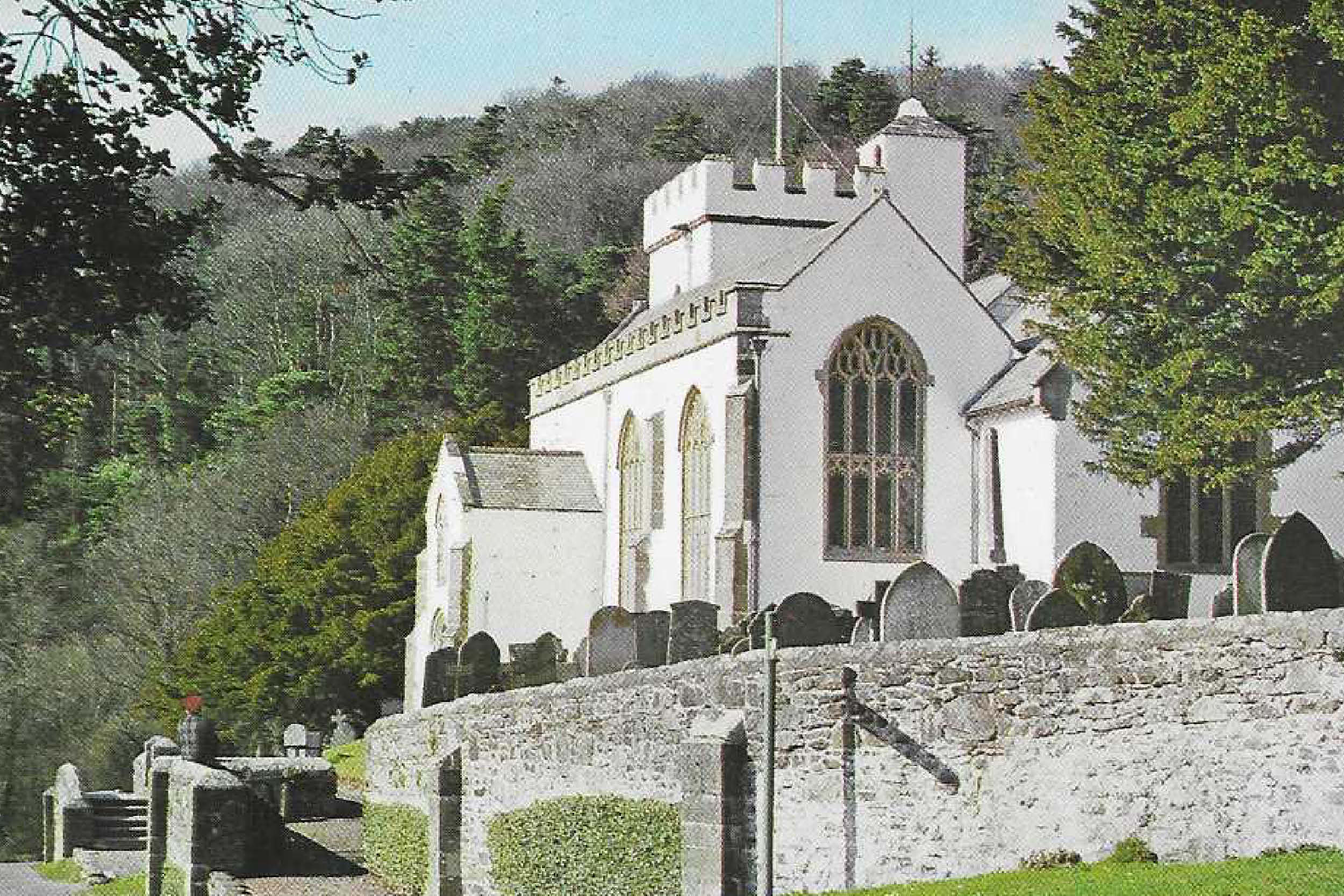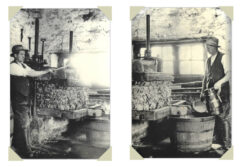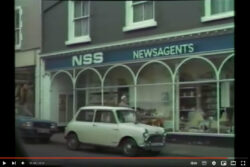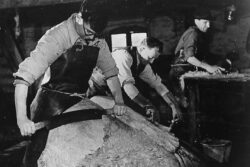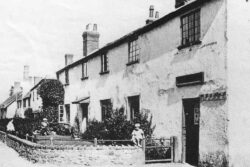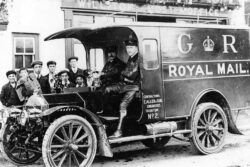This village situated on the Holnicote Estate 3 miles from Minehead is a magnet for tourists for several reasons. Its distinctive white Church perched on the side of the hill is an eyecatching feature. Its model village is essential viewing and for the more active Selworthy Beacon rising 1,010ft above the village is well worth the climb.
The parish of Selworthy includes the hamlets of Bossington, Tivington, Lynch, Brandish Street and Allerford. Two of these have a Chapel of Ease built for the convenience of parishioners living a long distance from the Parish Church. In Tivington can be found the thatched chapel of St Leonard which dates back to the mid C14 and is a Grade II* listed building and in West Lynch is Lynch Chapel dating from 1530.
All Saints Selworthy’s parish church was not always white. There are paintings of it with exposed red stone. Its bright colour comes from being regularly painted with a mix of lime and tallow. Locals attribute the colour to a vicar who frequented a popular pub, some distance away.
He decided to paint the stone white to help guide him home through the dark and murky Exmoor nights after a hard evening’s drinking!
The church is a Grade I listed building of Mediaeval origin. It has many fine features. The font is Saxon or early Norman and the painted wagon roof has carved bosses and angel figures. Above the porch is an upper storey that was once used by the Acland family of Holnicote as a balcony pew complete with fireplace The church boasts six bells, a C17 hourglass, used in the past to time the sermon, a copy of a chained book 1609 by Bishop John Jewel and C17 iron bound chest. The views from the porch over the Vale of Porlock are stunning. In the churchyard is a Mediaeval stone cross with three octagonal steps, which is of considerable antiquity.
The listed village War Memorial with eight names was unveiled in 1922 by Pte Alfred Creech of Allerford, whose leg had been amputated. He later moved to Roadwater. In the photo are Rev. W. T. Reader (Rector 1912-1920) and Rev. C.H. Bradburn 1920- 1923.
Sir Thomas Acland was responsible for the model village we see today with its picturesque thatched and limewashed cottages. In 1828 he decided to re-build the village with properties to house the aged and infirm of his Holnicote Estate, similar to that built in Blaise Hamlet in 1811, 4mls from Bristol city centre, where 9 cottages were built around an open green. He also began a gradual landscaping of the hills about Selworthy and features like Mitcham’s Seat and Agnes Fountain were created.
Today one of cottages is the well known Periwinkle Tea Room and garden and another is a NT shop. Just before and during the WW2 there were four tea gardens/cafes
in Selworthy village.
A pageant of Lorna Doone written by the Rector of Selworthy was performed in July 1930 on Selworthy Green to raise funds for Lynch Chapel. 3,000 came to see it over 3 days. It raised £500 gross.
Selworthy had a splendid Tithe barn, which is now a Grade II* Listed Building. It dates from the late Mediaeval period although was much altered in the C19 and mid C20 though fortunately the side facing the road is unaltered. It has a double Roman tiled roof and the North front has 7 buttresses with offsets. A rare feature is a central moulded arch blocked opening which it is thought was a ‘dole window ‘. This was used to hand food and money through to the poor. The barn is now a holiday let.
Marian. S. Archer Thompson whose father was vicar of All Saints from 1850- 1857 describes how the Tithe Dinner was held every year at the Rectory.
‘Of course Mr Stevenson (Rector) did not dine with the tithepayers himself, but my father was always present.The day after the dinner some of the remains- cold beef,both roast and boiled, and some plum pudding, used to be sent to us and I believe to many other houses also.I should think everything was donein the old-fashioned style. One Tithe Dinner Day I was sent to the Rectory on an errand with my nurse. It was a sight worth seeing- one great joint roasting before the kitchen fire, and in the back-kitchen another huge joint was roasting,the spit being turned by the old basket-maker.’
Marian also records how Sir Thomas Acland used to bring little gifts to his friends at Christmas. Things like almanacs, pocket-books, or gloves.
She was very proud of the lined gloves she received. All the old people from the cottages went to the Vicar’s cottage for a Christmas tea when Marian’s nanny always sang her Christmas hymn. She said that during her married life she had always sung this hymn early on Christmas morning to ‘her’ Jerry! A cross was erected in Bossington Woods in memory of Sir Thomas Dyke Acland 11th Baronet (1809 -1889) by his sons.
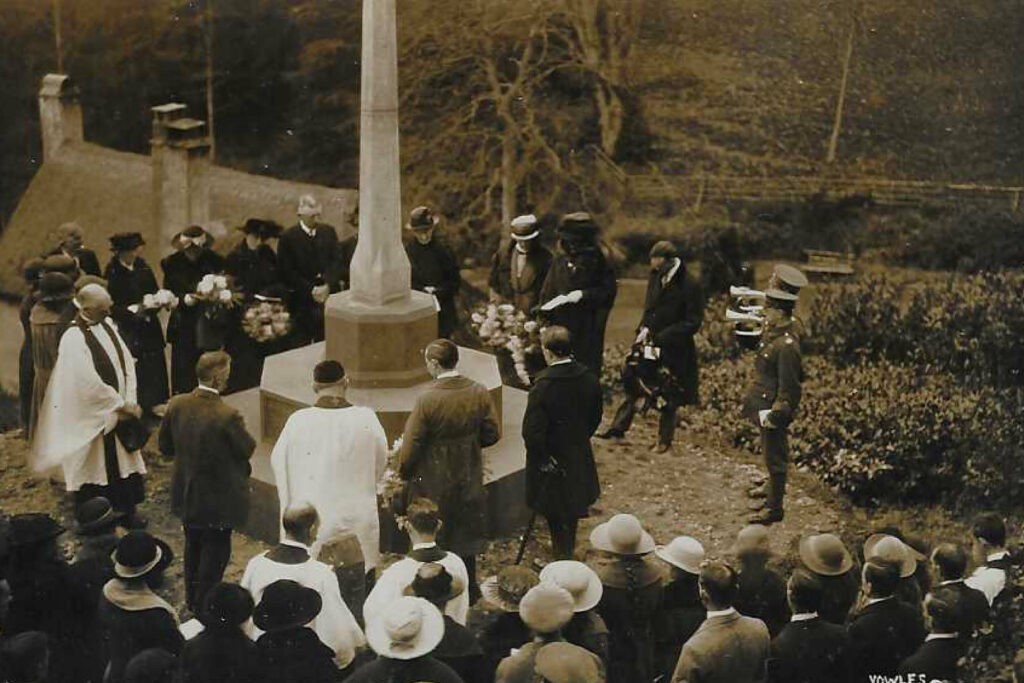
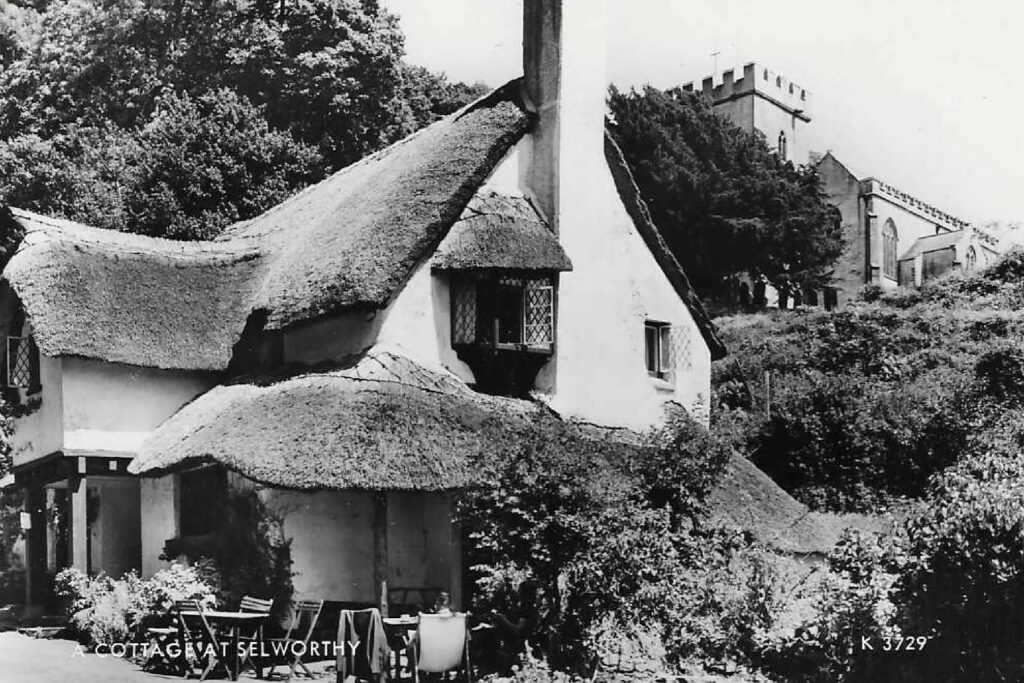
Compiled by Sally Bainbridge on behalf of Minehead Conservation Society.
Buy the book! Minehead & Beyond
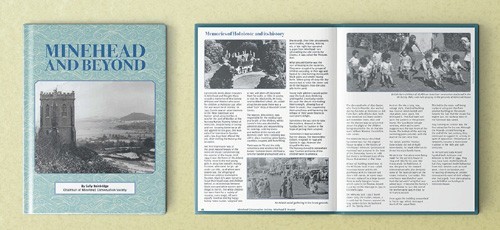
This book is a compilation of articles written for this magazine by Sally Bainbridge on behalf of Minehead Conservation Society. It contains information about the richness of West Somerset’s history; culture; people; heritage; traditions and beautiful and varied landscape. The book costs just £5 and all profits go to Minehead Conservation Society.
Available to buy from AR Computing, Park Lane Home Furnishing (in their Park Lane shop), Minehead Tourist Information Centre and Townsend House (Monday am).
Office: Townsend House, Townsend Road, Minehead TA24 5RG (01643 706258) E-mail: [email protected]
